Walz set to ease COVID curbs; 1st case of South Africa strain confirmed
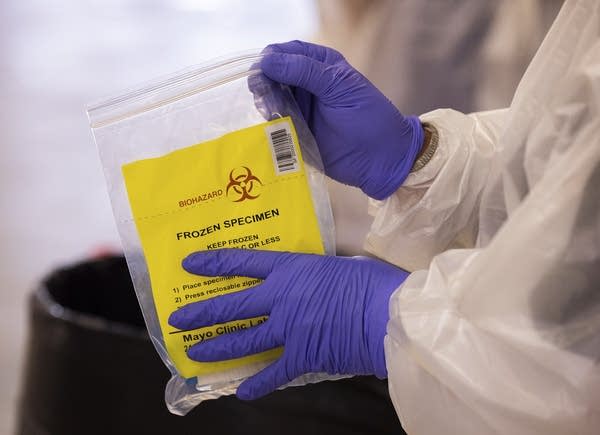
Go Deeper.
Create an account or log in to save stories.
Like this?
Thanks for liking this story! We have added it to a list of your favorite stories.
3 things to know:
Walz plans a major pullback on the state’s remaining daily life restrictions
1 in 5 Minnesotans with at least 1 dose; nearly 12 percent completely vaccinated
1st case of South Africa variant confirmed in Minnesota
Updated 3:41 p.m.
Gov. Tim Walz on Friday will announce a major pullback on Minnesota’s remaining COVID-19 restrictions.
He gave reporters a heads-up on it Thursday during an event at a suburban Twin Cities school. He didn’t offer many details but said it would be his biggest move yet in easing restrictions, with guidance on proms, sports and other larger gatherings.
“I think for proms that happen into May, and certainly graduations in June or whenever they’re looking at, I certainly envision that those will look pretty close to normal,” Walz said. “We’ll probably have folks gathered. There may be a little distancing with masks but it will certainly be larger crowds than we’ve seen.”
Walz has been under pressure to reduce COVID-19-related curbs on bars, restaurants and other public gathering places given that the state’s pandemic conditions have improved significantly over the past month and vaccinations are accelerating.
Turn Up Your Support
MPR News helps you turn down the noise and build shared understanding. Turn up your support for this public resource and keep trusted journalism accessible to all.
With baseball season near, the Minnesota Twins were seeking guidance on allowable crowd sizes at Target Field. The governor recently said that big events such as June weddings and the Minnesota State Fair were within reach given the pandemic metrics and the pace of vaccination.
Walz mentioned that the Twins need about a 30-day notice to prepare ticket sales for next month’s home opener, which is set for April 8 against the Seattle Mariners.
The governor said that he's still on the watch for COVID-19 variants that could push up caseloads. The Minnesota Department of Health on Thursday afternoon confirmed the first case of the worrisome so-called South Africa variant in Minnesota.
He’s expected to unveil his plans at 11 a.m. Friday.
Inoculation optimism
Walz’s move comes as state officials remain confident they’re on a path to offering a shot to every Minnesota adult starting in late April.
The Health Department on Thursday reported more than 48,000 new vaccinations, significantly higher than the prior Thursday. The seven-day trend is running at more than 42,000 shots daily, the highest since vaccinations began in late December.
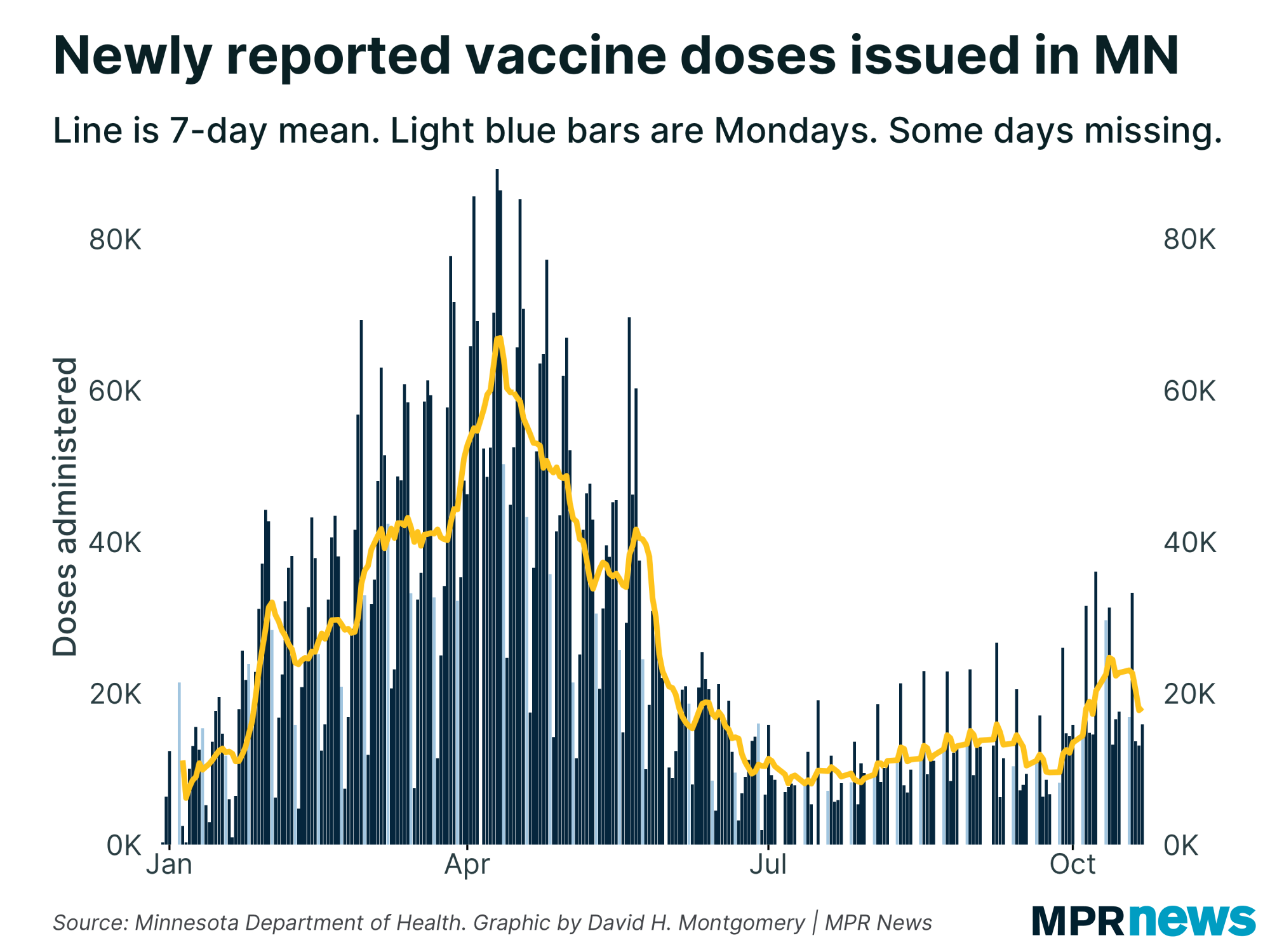
Agency data shows more than 642,000 people — 11.6 percent of the state’s population — have completed their vaccinations, while more than 1.1 million — about 20.3 percent — had received at least one dose, including more than 70 percent of people age 65 and older.
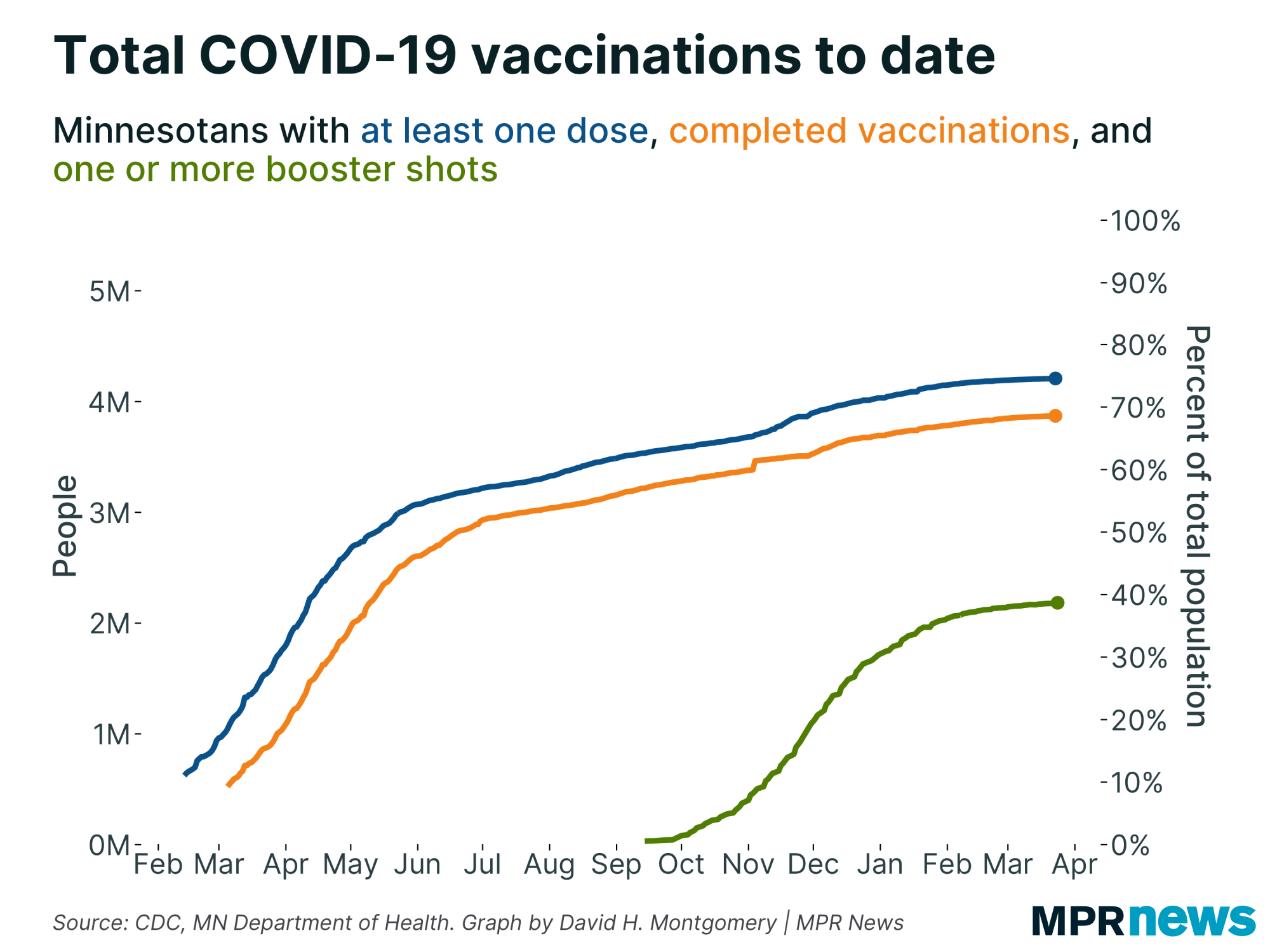
Because doses are shipped once a week, the state often sees its vaccination counts jump from Thursday through Sunday.
Officials continue to urge Minnesotans to stay vigilant against the disease, wearing masks in public gathering spaces and socially distancing. Concern continues to bubble around an ongoing outbreak of COVID-19 in Carver County that includes the worrisome U.K. strain.

State public health leaders have described their push to vaccinate Minnesotans as a race against another possible surge in the disease. That race came into focus Thursday — active case counts are ticking up.
The federal vaccine shipment to Minnesota came in at around 130,000 doses this week and the feds are projecting they’ll deliver somewhere around 300,000 doses in the last week of March, Gov. Tim Walz said Thursday.
Minnesota ranks 16th among states in doses administered per 100,000 people, according to data collected by the federal Centers for Disease Control and Prevention.
Pandemic metrics mostly stable; active cases up
Minnesota’s COVID-19 numbers show disease conditions continue to stay mostly stable, but there was a noticeable rise in the number of known, active cases. That count came in at 7,669 on Thursday, the highest it's been in nearly a month.
While the overall trend remains flat and current counts are still very low compared to late November and early December, the increase is notable given the concerns about the rise of the U.K. COVID-19 strain in Minnesota.

Hospitalization rates remain at levels last seen before the late-fall surge in cases. There were 236 people hospitalized with COVID-19 in Minnesota as of Wednesday; 63 needed intensive care.
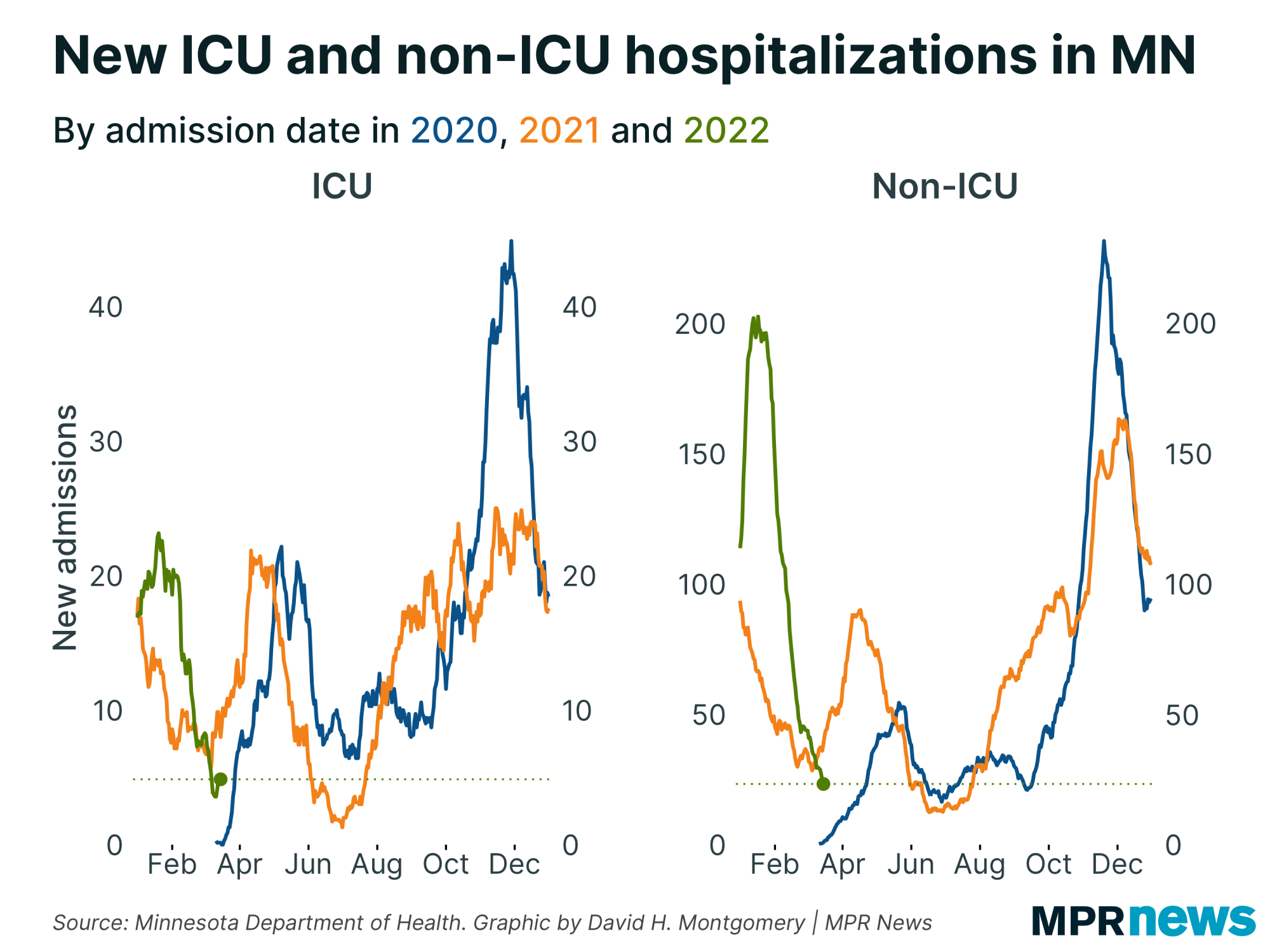
Nineteen newly reported deaths brought Minnesota’s collective in the pandemic toll to 6,724. Among those who’ve died, about 63 percent had been living in long-term care or assisted living facilities; most had underlying health problems.

The state has recorded 494,106 total confirmed or probable cases so far in the pandemic, including 1,096 posted Thursday. About 97 percent of Minnesotans known to be infected with COVID-19 in the pandemic have recovered to the point where they no longer need to be isolated.

Cases spread across age groups, regions
People in their 20s still make up the age bracket with the state’s largest number of confirmed cases — more than 92,000 since the pandemic began, including more than 48,000 among those ages 20 to 24.

The number of high school-age youth confirmed with the disease has also grown, with more than 38,000 total cases among those ages 15 to 19 since the pandemic began.
With kids increasingly returning to school buildings and sports, Minnesota public health officials are urging Minnesota families with children to get tested every two weeks for COVID-19 now until the end of the school year.
Although young people are less likely to feel the worst effects of the disease and end up hospitalized, experts worry youth will spread it unknowingly to older relatives and members of other vulnerable populations.
People can have the coronavirus and spread COVID-19 when they don’t have symptoms.
Regionally, most parts of Minnesota are down significantly from the late November and early December spike, as well as a January uptick.

Caseloads still heaviest among people of color
In Minnesota and across the country, COVID-19 has hit communities of color disproportionately hard in both cases and deaths. That’s been especially true for Minnesotans of Hispanic descent for much of the pandemic.

Even as new case counts continue to track well below their late November, early December peaks, the data shows Latino people continue to be hit hard.
Distrust of the government, together with deeply rooted health and economic disparities, have hampered efforts to boost testing among communities of color, officials say, especially among unauthorized immigrants who fear their personal information may be used to deport them.
Walz has acknowledged that distrust by communities of color has been a problem during the pandemic. Officials last week offered up some data on vaccinations broken down by race and ethnicity. The state is expected to update the data weekly.
Minnesota Health Commissioner Jan Malcolm said the state was committed to doing more to expand vaccine access to people of color, including getting more doses to community pharmacies, partnering with local groups and deploying mobile vaccination clinics.
Concerns remain over UK variant’s spread
Minnesota health officials continue to warn of a growing outbreak of the U.K. COVID-19 strain centered around youth sports in Carver County. They are recommending, but not ordering, a two-week suspension of youth sports in the county amid the outbreak.
Since late January, there have been at least 80 COVID-19 cases linked to school and club sports in the metro-area county. Among those, 27 have been confirmed to be the U.K. variant, state officials said Monday. Walz on Tuesday said the Health Department would likely be adding more cases to that count.
Epidemiologists have also seen an uptick of the U.K. variant cases in Carver County gyms and fitness centers — with many of those linked to the youth sports cases. The state will open a COVID-19 testing center in Chanhassen in response.
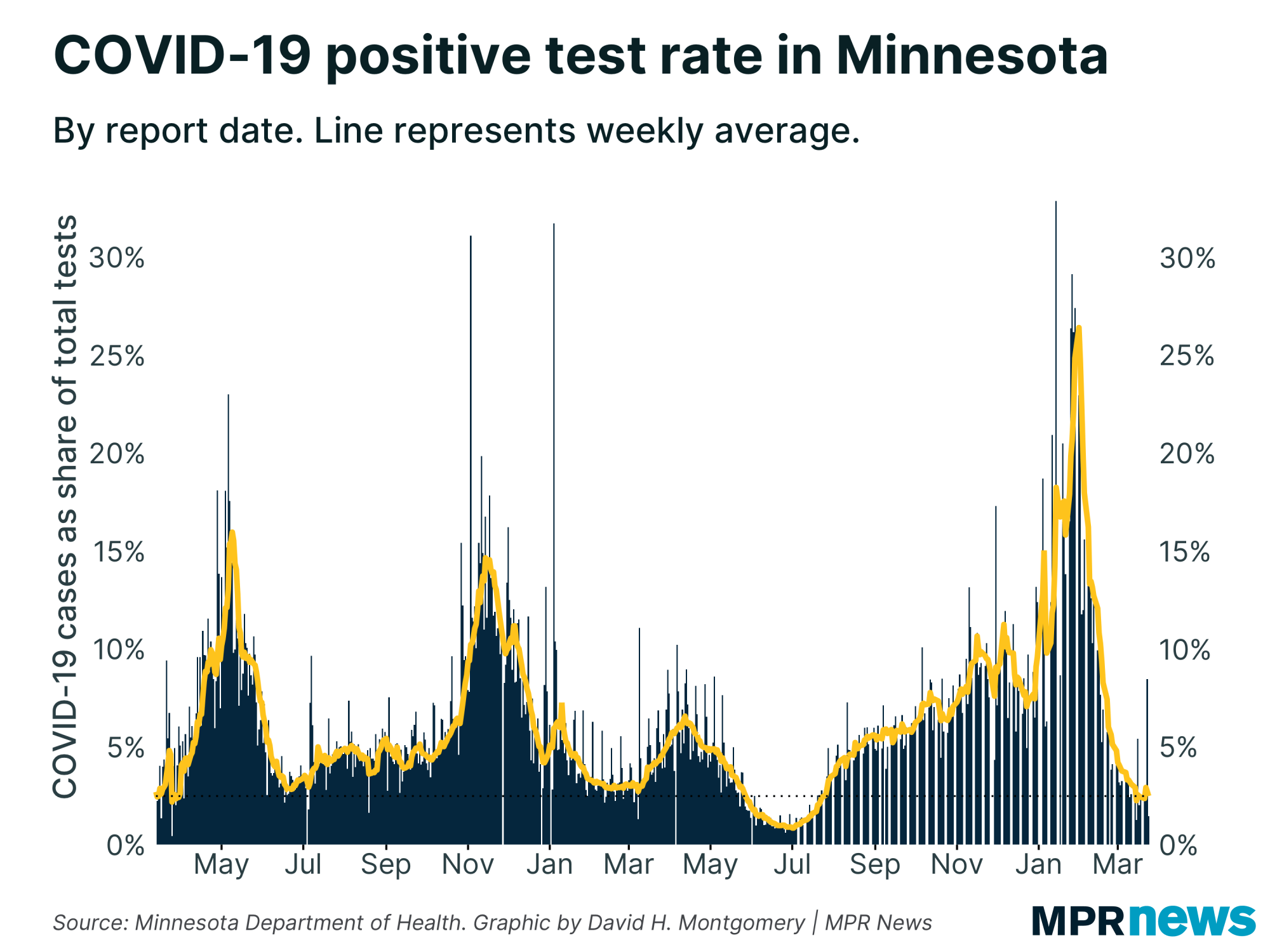
The growth of the variant presents an "added risk that we may see another surge in cases, and we need everyone to do their part to prevent that from happening,” Kris Ehresmann, the state’s infectious disease director, said Monday.
Many of those confirmed cases are young people who are not in line to get a vaccination in the short-term.
It’s not just a Carver County problem, she added, noting that 15 counties have at least one confirmed case of the variant. Minnesota currently knows of 187 confirmed cases.
The U.K. strain is considered more transmissible than other coronavirus variants. While researchers don't believe it's more deadly on its own, its ease of spread may lead to more deaths.
“We’re making progress with vaccines,” she said, “but it is a race against time.”
COVID-19 in Minnesota
Data in these graphs are based on the Minnesota Department of Health's cumulative totals released at 11 a.m. daily. You can find more detailed statistics on COVID-19 at the Health Department website.
Top headlines
Vaccine expansion brings hope to Minn. patients with serious conditions: For thousands of Minnesotans with serious health complications, hope is on the horizon, as COVID-19 vaccine eligibility expands.
What's behind spikes in COVID case, death numbers in Minnesota's latest data release? Four private testing labs apparently didn't report 37,350 COVID-19 test results — including 891 positive cases — to the state Health Department over a period of months. And those unreported cases mean that 22 hospitalizations and 138 deaths weren't classified as being connected to COVID-19.
Minnesota expands vaccine eligibility; shots for all possible by late April: By Wednesday, roughly 3 million Minnesotans will be eligible for the COVID-19 vaccine, as the state reaches a key threshold in vaccinating its 65-plus population.


